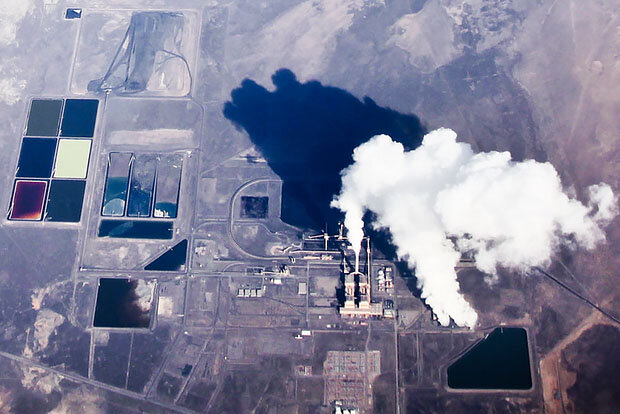Introduction to Climate Change
Definition and Historical Context
You might wonder, what is climate change? Well, it’s the long-term alteration of temperature and typical weather patterns in a place. Scientific research shows these changes are primarily due to human activities, like burning fossil fuels. Historically, Earth has undergone climate fluctuations. But the rate of change now is unprecedented. You can trace this change back to the Industrial Revolution, when factories began emitting more greenhouse gases. The climate change definition pdf often highlights this shift, emphasizing the need to address these changes urgently.

Factors and Causes
Many factors drive climate change. Greenhouse gases, deforestation, and industrial activities top the list. The causes of climate change pdf details how carbon dioxide, methane, and nitrous oxide trap heat in the atmosphere, leading to warmer temperatures. You might hear about how volcanic eruptions or ocean currents also play a role. But human influence is the predominant cause. Recognizing these factors is crucial to developing solutions. Understanding the causes of climate change essay helps you grasp the complexity and urgency of the problem.
Importance of Understanding Impacts
Understanding climate change impacts is crucial for protecting the environment. You’ve likely heard about the 10 effects of climate change on the environment. These include rising sea levels, more intense storms, and melting glaciers. It’s vital to grasp these impacts because they threaten ecosystems and human livelihoods. 10 importance of climate change underscore why we must act now. By educating yourself on the impact of climate change on human health pdf, you can see the broader implications. This knowledge empowers you to contribute to solutions, ensuring a sustainable future.
Effect 1: Rising Temperatures
Global Temperature Rise
As you explore the causes of climate change, you’ll notice a major factor: greenhouse gas emissions. These emissions trap heat in the Earth’s atmosphere, leading to a gradual increase in global temperatures. This rise in temperature, often referred to as global warming, is evident in various environmental changes. According to many sources, including the climate change definition pdf, these gases primarily come from burning fossil fuels. They include carbon dioxide, methane, and nitrous oxide. When these gases accumulate, they create a warming effect that is altering climate patterns worldwide.
You might wonder how these rising temperatures affect the planet’s weather systems. As temperatures climb, they can cause more extreme weather events. You will find that heatwaves become more frequent and severe. Storms can intensify, leading to more flooding in some regions. Conversely, other areas might experience prolonged droughts. This constant shift in weather patterns disrupts ecosystems and challenges the survival of various species.
Impact on Human Health and Ecosystems
Have you considered the impact of climate change on human health? Rising temperatures play a significant role here as well. The impact of climate change on human health essay emphasizes how hotter climates can exacerbate health issues. Heat-related illnesses, such as heatstroke, become more common as temperatures rise. Additionally, warmer climates can increase the spread of vector-borne diseases, such as malaria and dengue fever.
You can also see changes in natural ecosystems. These environments struggle to adapt to rapid temperature shifts. Species that can’t migrate to cooler areas may face extinction. This loss of biodiversity can destabilize entire ecosystems. For example, coral reefs, sensitive to temperature changes, are bleaching and dying off. As you delve deeper into the causes and effects of climate change essay, you’ll uncover the intricate ways that rising temperatures impact the natural world and human health alike. These challenges demand urgent attention to mitigate their effects on both the environment and human society.
Effect 2: Melting Ice Caps and Glaciers
Rising Sea Levels
Melting ice caps and glaciers contribute significantly to rising sea levels. As you observe the gradual shrinkage of these ice formations, you’ll find that melted water adds directly to the ocean volume. According to historical data, the rate of ice melt has accelerated over the past few decades. This has led to an increase in sea levels that threatens coastal regions. Future projections suggest that sea levels could rise by several feet by the end of the century. This rise can lead to severe flooding, threatening millions of people living in coastal areas.
The consequences extend beyond just human settlements. Higher sea levels also disrupt natural habitats. Coastal wetlands could be submerged, affecting a variety of marine and bird species that rely on these ecosystems. As someone concerned about environmental balance, you must understand that these changes threaten biodiversity and disrupt food chains.
Impact on Marine Life and Indigenous Communities
Melting ice caps are not just a threat to coastlines but also impact marine life significantly. As the ice melts, it releases cold, freshwater into the ocean. This change in water temperature and salinity affects marine species that are adapted to specific conditions. You might notice shifts in fish populations, as certain species move to colder regions, and others struggle to survive. This can disrupt traditional fishing practices, affecting livelihoods.
Indigenous communities, particularly those in the Arctic, depend on ice for hunting and transportation. Melting ice alters their way of life dramatically. As you delve deeper into this issue, consider how indigenous cultures, already vulnerable to climate change, face increased challenges. Their hunting grounds and migration routes are disappearing, forcing communities to adapt rapidly to survive. You can appreciate how this not only affects their economy but also their cultural heritage.
Effect 3: Increased Frequency of Extreme Weather Events
Examples of Extreme Weather Patterns
You have likely noticed more frequent and intense weather events in recent years. From hurricanes to wildfires, these events are becoming more common. For instance, hurricanes are not only more frequent but also more powerful, causing devastating impacts in coastal areas. In addition, droughts are lasting longer and affecting larger regions, leading to water shortages and agricultural challenges. Tornadoes and cyclones have also been reported with increasing intensity, highlighting the unpredictable nature of climate change.
Extreme weather is closely linked to climate change. There is a rise in sea temperatures which fuels storms and hurricanes. This change in temperature affects weather patterns globally, leading to unforeseen consequences. In essence, the energy imbalance in the earth’s system causes these dramatic shifts. You can witness these events and their impacts in everyday life, from disrupted travel plans to increased insurance premiums.
Economic and Social Impacts
Natural disasters have significant economic and social impacts. They lead to loss of life, destruction of homes, and interruption of livelihoods. You might see communities struggling to rebuild after a hurricane or flood. The cost of recovery can run into billions, affecting national economies. Moreover, these disasters often hit vulnerable communities the hardest, exacerbating social inequalities and leading to long-term economic disadvantages.
The social impact is also profound. Displacement of communities can lead to loss of cultural heritage and identity. You may notice increased stress and mental health issues among affected populations as they cope with the loss of loved ones and possessions. The economic burden can limit access to essential services like education and healthcare, further entrenching poverty. Therefore, the need for effective adaptation strategies becomes crucial to mitigate these events and their impacts.
Effect 4: Ocean Acidification
CO2 Emissions and Ocean Acidification
When you think of climate change, consider its impact on oceans. High levels of CO2 emissions cause ocean acidification. As CO2 rises in the atmosphere, oceans absorb a large portion. This process leads to a drop in pH levels, making oceans more acidic. A more acidic ocean environment disrupts the balance of marine ecosystems. This is a direct link between human activities and negative environmental changes.
Coral reefs, essential to marine biodiversity, face threats from acidification. These vibrant ecosystems provide critical habitats for many marine species. Acidic waters weaken coral skeletons, making them susceptible to damage. As coral health declines, the entire reef ecosystem suffers. This ripple effect threatens countless marine organisms dependent on corals for survival.
Impact on Fishing Communities and Global Food Systems
For fishing communities, ocean acidification poses serious challenges. Many fish species rely on stable marine environments to thrive. As the ocean’s acidity increases, it disrupts the food chain. Fish populations face stress, impacting their growth and reproduction. This leads to decreased catches and financial hardships for fishermen.
Globally, food systems depend on healthy oceans. Fish is a key protein source for millions. As acidification affects marine biodiversity, it creates scarcity in seafood supplies. This scarcity can lead to higher prices and food insecurity. The effects of climate change on agriculture are not limited to land; they extend to our oceans, showing an interconnected world where every change has cascading consequences.
Effect 5: Changes in Precipitation Patterns
Alterations in Rainfall Distribution
Climate change significantly alters rainfall patterns across the globe. You might notice regions experiencing more intense storms, while others face prolonged dry spells. This shift is due to rising temperatures affecting the water cycle. Warmer air holds more moisture, leading to heavy rain events. Conversely, areas may experience reduced precipitation, as changes in atmospheric circulation patterns divert rain away.
Impacts on Water Supply and Agriculture
These changes in precipitation directly affect water supply. You may observe reduced water availability in some areas, exacerbating water scarcity issues. In agriculture, inconsistent rainfall can lead to crop failures or reduced yields. Negative effects of climate change on agriculture include soil erosion and nutrient depletion.
Connection to Droughts and Water Scarcity
The altered rainfall patterns also increase the frequency and severity of droughts. As precipitation decreases, groundwater reserves deplete, affecting not only agriculture but also human consumption and sanitation. This scenario poses a challenge to meeting water demands, impacting everything from personal use to industrial activities.
Effect 6: Loss of Biodiversity
Species Extinction Rates Due to Habitat Changes
Climate change significantly impacts biodiversity. Rising temperatures, shifting weather patterns, and changing precipitation levels alter habitats rapidly. This creates environments unsuitable for many species, leading to migration challenges and increased extinction risks. According to studies, the rate of species extinction is accelerating, with predictions indicating that 20-30% of species may face extinction if global temperatures rise by 1.5-2.5°C.
You can observe the effects in ecosystems across the globe. For instance, polar bears in the Arctic experience habitat loss due to melting ice. Similarly, coral reefs face bleaching events, threatening marine life dependent on these ecosystems. Each species plays a unique role in its habitat, and their loss disrupts the intricate balance of ecosystems, further accelerating biodiversity decline.
Importance of Biodiversity and Conservation Efforts
Biodiversity is crucial for ecosystem health. It ensures resilience against changes and disturbances, maintaining equilibrium and supporting services like pollination, nutrient cycling, and climate regulation. The loss of biodiversity jeopardizes these functions, impacting food security and human health.
Conservation efforts are essential to protect endangered species. Strategies include creating protected areas, restoring habitats, and implementing breeding programs in captivity. International agreements, like the Convention on Biological Diversity, aim to reduce biodiversity loss and promote sustainable practices. Your involvement in conservation efforts, such as supporting local wildlife organizations and reducing your carbon footprint, can help mitigate the negative effects of climate change on biodiversity.
Effect 7: Soil Degradation
Impact on Soil Quality and Fertility
When discussing how does climate change affect agriculture, the degradation of soil stands out. Soil degradation diminishes its quality and fertility, directly influenced by climate change. Rising temperatures increase evaporation rates, leading to drier soils. These conditions often result in nutrient loss and reduced organic matter content. Consequently, the soil becomes less fertile and cannot sustain crop growth as effectively.
Erosion, exacerbated by increased frequency and intensity of rainfall, further compounds soil degradation. This erosion strips away the topsoil, which contains the most nutrients and organic matter vital for crop growth. As a result, the soil’s ability to support plant life diminishes, posing a significant threat to agricultural productivity.
Impact on Agriculture and Food Security
The negative effects of climate change on agriculture directly impact food security. With soils becoming less fertile, agricultural outputs decrease. This decline in productivity can lead to food shortages, particularly in regions already facing food insecurity. Farmers may struggle to produce enough food to meet the demand, driving up prices and making food less accessible.
To counteract these challenges, it’s crucial to adopt sustainable farming practices that enhance soil resilience. Techniques such as crop rotation, cover cropping, and agroforestry can help maintain soil health. These practices improve soil structure, increase water retention, and enhance nutrient cycling, offering effective ways to mitigate the impact of climate change on soil.
Addressing the causes of climate change pdf provides insights into strategies that enhance soil resilience. Implementing these practices can create a more sustainable agricultural system, ensuring long-term food security even amidst changing climate conditions.
Effect 8: Altered Ecosystems
How Climate Change Alters Natural Habitats
Climate change disrupts natural habitats in profound ways. Rising temperatures and changes in precipitation patterns can transform landscapes. You might observe forests turning into savannas or wetlands drying up. These changes can lead to the loss of plant and animal species that adapted to specific conditions. For instance, polar bears struggle as ice caps melt. This alteration can have cascading effects on the entire ecosystem.
Shifts in natural habitats affect biodiversity. Species may migrate to new areas where the climate becomes more suitable. However, not all species can relocate quickly or adapt to new environments. This can lead to a decrease in species diversity in certain regions. You might find that the specific services these ecosystems provide, such as water purification and pollination, are at risk.
Shifts in Species Distribution and Migratory Patterns
You may notice shifts in species distribution and migratory patterns. Birds and other migratory animals change their seasonal routes. This adjustment is a response to altered climate conditions. For example, birds might start migrating earlier due to warmer temperatures. Changes in timing can disrupt reproductive cycles and food availability.
These shifts impact ecosystems and human activities dependent on them. Agricultural practices might be affected. Farmers rely on natural pollinators like bees, whose patterns might change. This brings about challenges to crop production and food security. Adapting to these changes requires innovative approaches to maintain ecosystem services.
Importance of Ecosystem Services to Human Well-being
Ecosystem services are vital for human survival. They provide resources like clean air, water, and food. Climate change threatens these essential services. You rely on these natural processes for health and well-being. Changes in ecosystems can lead to reduced availability of resources.
Human activities often depend on stable and predictable ecosystem services. For instance, water filtration provided by wetlands becomes compromised. This can lead to increased water treatment costs and health risks. Understanding and addressing these changes is crucial to mitigate the negative impacts on society and maintain quality of life.
Effect 9: Increased Pests and Diseases
Impact on Pest Populations and Plant Diseases
As climate change progresses, you will notice shifts in pest populations and plant diseases. Warmer temperatures and altered precipitation patterns create favorable conditions for pests to flourish. Pests like insects and rodents thrive in warmer climates, leading to increased infestations. These pests can spread rapidly and invade new areas, previously unsuitable due to cooler climates.
For plant diseases, climate change can lead to increased occurrences due to the stress plants experience from changing weather conditions. Diseases spread more easily as temperatures rise and humidity levels increase. You will observe more frequent and severe outbreaks, impacting the health and productivity of crops.
Consequences for Crop Yields and Agricultural Productivity
The implications for crop yields and agricultural productivity due to increased pests and diseases are significant. As pests and diseases become more prevalent, crop losses are likely to rise. You may find that your crops face increased damage from pests, leading to reduced yields and quality.
This reduction in agricultural productivity can affect food security and livelihoods, particularly in regions heavily dependent on farming. You may need to invest more resources into pest control measures or face economic losses.
Strategies for Managing Pests in a Changing Climate
Adapting to the challenges posed by climate change requires implementing effective pest management strategies. Integrated pest management (IPM) can be a valuable approach. You can combine biological, cultural, and chemical practices to control pest populations sustainably.
Furthermore, you might consider adopting new agricultural practices, such as crop rotation and resistant crop varieties. Monitoring pest populations and employing early warning systems can help you respond promptly to pest outbreaks and minimize damage to your crops.
Effect 10: Human Displacement and Migration
Climate Change and Forced Migration
Climate change significantly contributes to human displacement and migration. Rising sea levels, extreme weather events, and prolonged droughts destroy homes and livelihoods. You may find that communities living in low-lying coastal areas or regions prone to natural disasters are particularly vulnerable. When climate conditions make areas uninhabitable, people are forced to move, seeking safer environments.
This forced migration can lead to increased strain on resources in host communities. As climate refugees arrive, you might notice a surge in demand for housing, food, and water. The social fabric of these areas can be strained, leading to tension and conflict. Moreover, displaced populations often face challenges in adapting to new climates and cultures.
Social and Political Implications of Climate-Induced Migration
The social and political implications of climate-induced migration are profound. Governments are pressured to address the needs of displaced populations. You may see policy changes aimed at integrating migrants into local communities. However, these efforts can be met with resistance, leading to political instability.
Climate change not only displaces people but also exacerbates existing social inequalities. You might observe that marginalized groups are disproportionately affected, lacking resources to adapt or relocate. The struggle for survival can ignite social unrest, posing a challenge for political leaders. Addressing these issues requires coordinated efforts across borders and sectors, ensuring that both displaced and host communities thrive.
Conclusion
Summarizing the Key Effects
In exploring the 10 effects of climate change on the environment, you might notice their intricate interconnectedness. Rising temperatures lead to melting glaciers, which elevate sea levels. This can result in habitat loss, affecting both marine and terrestrial ecosystems. Extreme weather patterns become more frequent, influencing biodiversity and disrupting ecosystems. You see how these changes can alter local climates, impacting agriculture and water supply.
Deforestation, driven by human activities and environmental changes, releases more carbon into the atmosphere. Ocean acidification, due to increased CO2 levels, impacts marine life and coral reefs. These examples of climate change in everyday life demonstrate the cascading effects that one change in the environment can trigger another. Understanding these interconnected effects is crucial for developing effective solutions.
Call to Action and Global Cooperation
Addressing climate change needs your active participation. Become informed about the causes of climate change essay topics, which show how industrial activities contribute to rising temperatures. By learning more, you can engage in sustainable practices, reducing your carbon footprint. Small actions, collectively undertaken, lead to significant positive effects of climate change on agriculture, among other areas.
Global cooperation and policy changes are vital in combating climate change. Collaborative efforts can lead to effective climate policies that limit emissions and promote renewable energy. You can advocate for these changes by supporting organizations and policymakers focused on climate action. This requires not just individual efforts but a united front from all nations to mitigate the detrimental effects while enhancing the 10 importance of climate change initiatives.
What is climate change?
Climate change refers to the long-term alteration of temperature and typical weather patterns in a place, primarily driven by human activities such as burning fossil fuels.
What historical context is associated with climate change?
The rate of climate change is unprecedented and can be traced back to the Industrial Revolution, when factories began emitting significant amounts of greenhouse gases.
What factors and causes contribute to climate change?
Key factors driving climate change include greenhouse gases, deforestation, and industrial activities. Carbon dioxide, methane, and nitrous oxide are the primary gases that trap heat in the atmosphere.
Why is it important to understand the impacts of climate change?
Understanding the impacts of climate change is crucial for protecting the environment, as it threatens ecosystems and human livelihoods through effects like rising sea levels and more intense storms.
How does global temperature rise relate to climate change?
Global temperature rise, often referred to as global warming, is primarily caused by greenhouse gas emissions, which trap heat in the Earth’s atmosphere, leading to various environmental changes.
What are the health impacts associated with climate change?
Rising temperatures can exacerbate health issues, leading to more heat-related illnesses and the increased spread of vector-borne diseases like malaria and dengue fever.
How does climate change affect marine life and indigenous communities?
Melting ice caps affect marine ecosystems and disrupt traditional hunting and transportation practices for indigenous communities, particularly in the Arctic.
What examples of extreme weather patterns are linked to climate change?
Extreme weather patterns, including more frequent hurricanes, wildfires, droughts, and intense storms, have become more common due to climate change.
What are the economic and social impacts of climate change?
Natural disasters caused by climate change can lead to significant loss of life, destruction of property, and increased social inequalities, disproportionately affecting vulnerable communities.
How do CO2 emissions lead to ocean acidification?
High levels of CO2 emissions cause oceans to absorb more carbon dioxide, leading to a drop in pH levels and a more acidic ocean environment, which disrupts marine ecosystems.
What is the impact of climate change on agriculture and food security?
Climate change negatively affects agricultural productivity due to soil degradation, inconsistent rainfall, and increased pest populations, threatening food security.
How does climate change alter natural habitats and species distribution?
Climate change disrupts natural habitats, leading to shifts in species distribution and migratory patterns, which can result in decreased biodiversity and ecosystem services.
What are the implications of climate change-induced forced migration?
Climate change can lead to human displacement as communities move due to uninhabitable conditions, straining resources in host communities and potentially leading to social unrest.
What strategies can be employed to manage pests in a changing climate?
Effective pest management strategies, such as integrated pest management (IPM), crop rotation, and the use of resistant crop varieties, can help mitigate pest-related challenges.
Why is biodiversity important in the context of climate change?
Biodiversity is crucial for ecosystem health and resilience against changes. Its loss threatens ecosystem functions, impacting food security and human health.
What actions can individuals take to combat climate change?
Individuals can reduce their carbon footprint by engaging in sustainable practices and advocating for policy changes that promote climate action and renewable energy initiatives.






